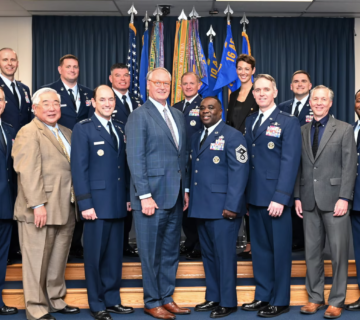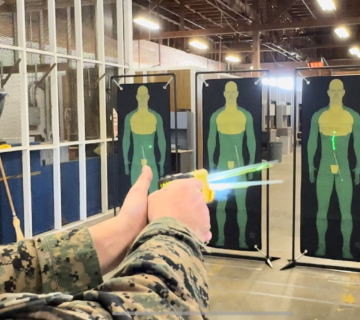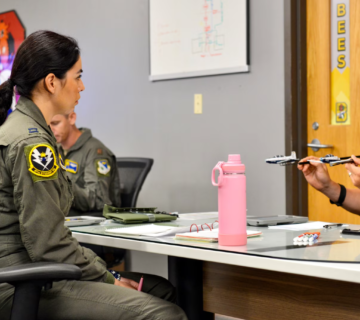WRIGHT-PATTERSON AIR FORCE BASE, Ohio —
Military service often requires duty in noisy environments that can cause hearing loss and it doesn’t just happen during combat operations at deployed locations far from home station.
From flight line operations to firearms qualification ranges, aircraft maintenance back shops, vehicle repair shops, civil engineering shops, or even Air Force Research laboratories where innovative and agile technologies are born, noise brings the potential of hearing loss if proper personal protective hearing equipment is not available or utilized.
“In fact, Department of Veterans Affairs records show that auditory conditions such as hearing loss and tinnitus are the number one and number two most prevalent disability claim in the VA,” said Dr. Tanisha Hammill, research coordination branch lead at the Department of Defense Hearing Center of Excellence at Joint Base San Antonio-Lackland. “In terms of number of claims, this is the most prevalent injury among our veterans, so there is an obvious need to focus on reducing those injuries among our service members,” she said.
In 2009, the Congressionally mandated HCE was stood up to combat hearing and balance disorders. As part of the HCE, the Collaborative Auditory & Vestibular Research Network, or CAVRN, was formed to bring together researchers with an auditory research focus to discuss current research efforts across the DOD and VA enterprises, providing unique opportunities for collaboration, Hammill said.
Annual CAVRN meetings are held at federal facilities and are hosted by member organizations and this year, the annual meeting was held April 24-26 and was hosted by the 711th Human Performance Wing’s Airman Systems Directorate, Warfighter Interface Division, Battlespace Acoustics Branch; the United States Air Force School of Aerospace Medicine and the Naval Medical Research Unit-Dayton.
Brig. Gen. Mark Koeniger, 711th HPW commander, welcomed the CAVRN meeting attendees and cited numerous opportunities for collaboration with the 711 HPW.
“As you go forward, the Human Performance Wing wants to be part of what you all do to help Soldiers, Sailors, Airmen and Marines maintain their hearing so that hopefully in the future, hearing loss ceases to be the number one disability.





